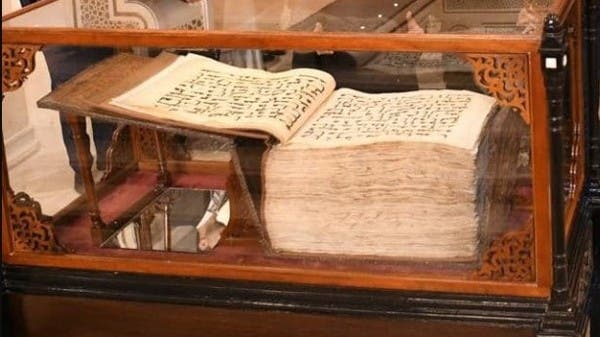Opinions differed as to whether it was the Qur’an from which our master Uthman was reading, or one of the copies he sent to the Egyptians, or a copy written during the Umayyad dynasty.
Yesterday, Egypt displayed the world’s largest Ottoman Qur’an at Egypt’s Islamic Cultural Center, which was inaugurated by President Abdel Fattah El-Sisi in the New Administrative Capital.
The Qur’an, which weighs about 80 kilograms, was written with iron ink on parchment, in simple, undotted kufic script.
Egyptian President Abdel Fattah El-Sisi inspects the Koran
The Mushaf dates back to the first century AH, and opinions differed as to whether it was the Mushaf from which our master Othman was reading, or one of the copies that he sent to the Egyptians, or a copy that was written during the era of the Umayyad dynasty and was preserved in the Amr ibn al-Aas Mosque for 4 centuries.
And the Qur’an was preserved in the Fadhil School during the era of the Ayyubid state until the school was destroyed, so Al-Qastalani mentions, “When the school was destroyed, nothing remained of it except the large Qur’an written in the first Kufic script.
And Sultan Al-Ashraf Qansuh Al-Ghawri transferred it to the dome that he established to protect it and made the gilded leather case below it, and it is written on it that it is the Ottoman Qur’an.
During the reign of the Muhammad Ali family, it was transferred to the Citadel of Salah al-Din, the seat of government, and its journey continued through the Husseini scene and the central library of Islamic manuscripts in the Sayyidah Zainab Mosque, and it was finally preserved in the Holy Qur’an House in the Islamic Center of Egypt.


